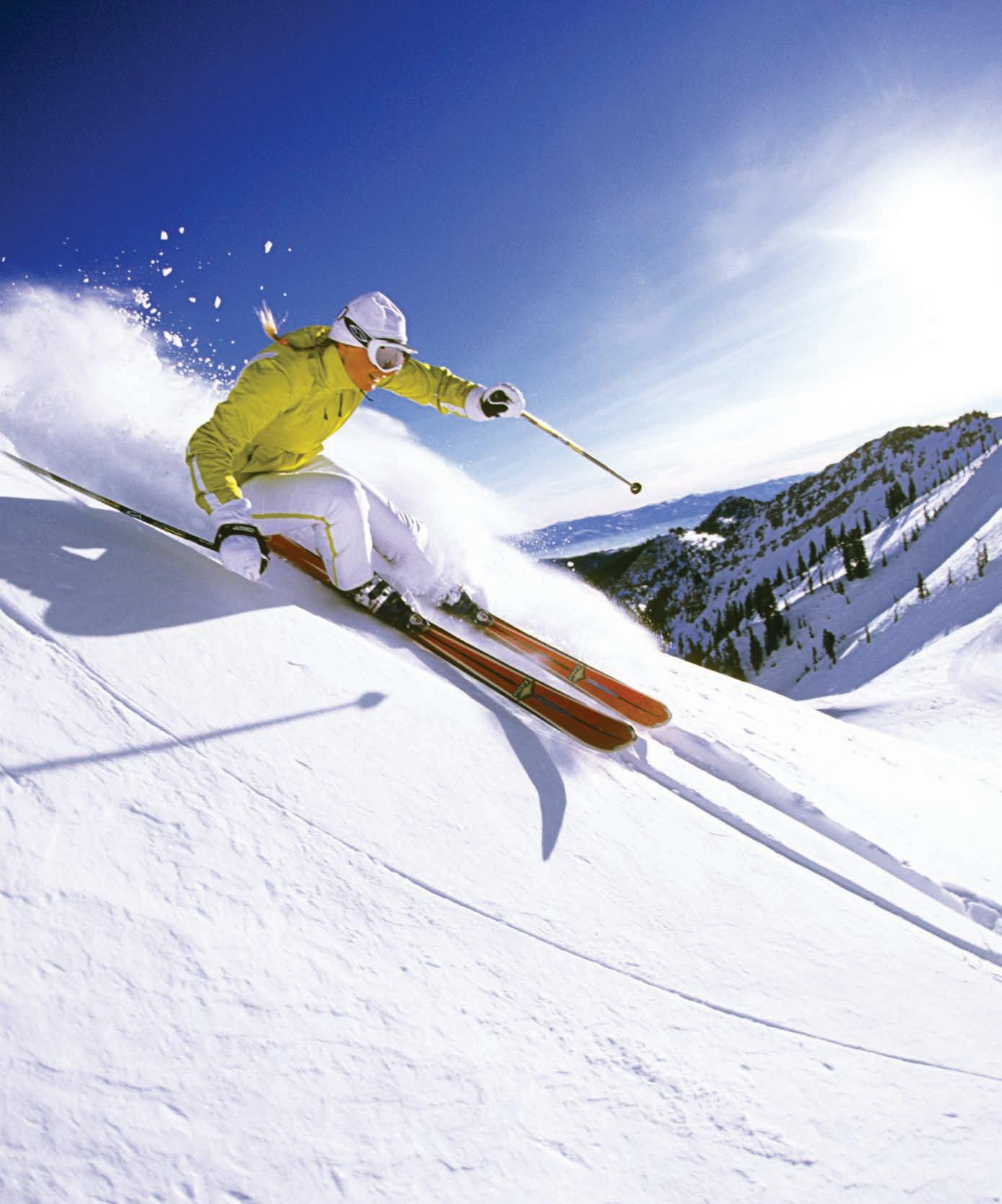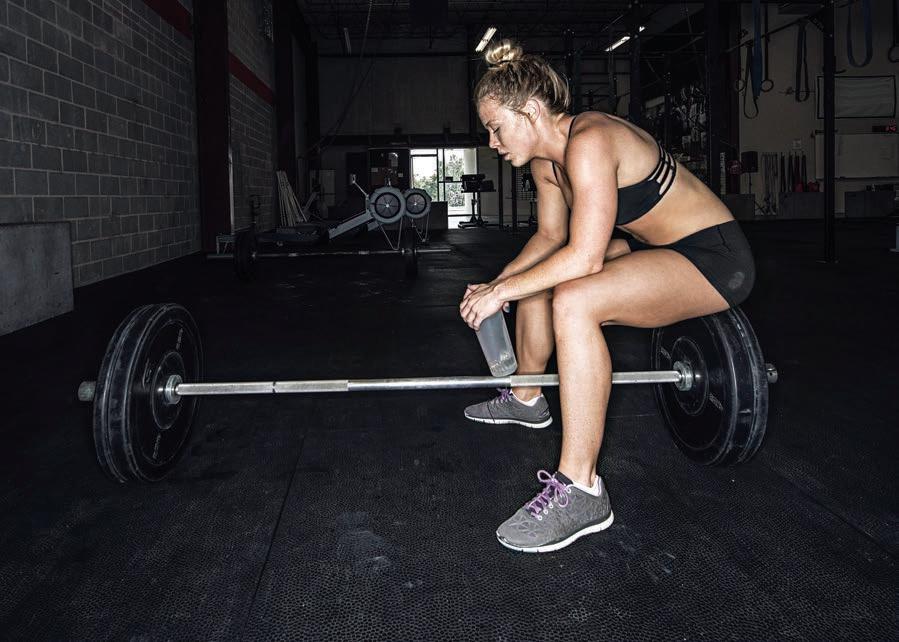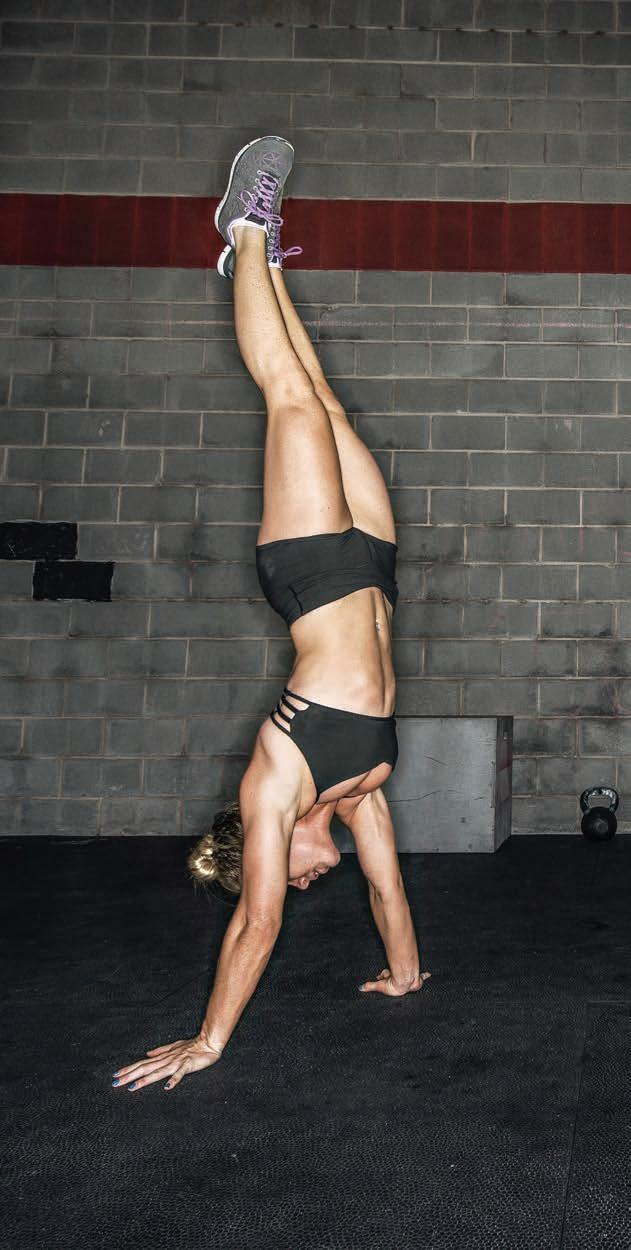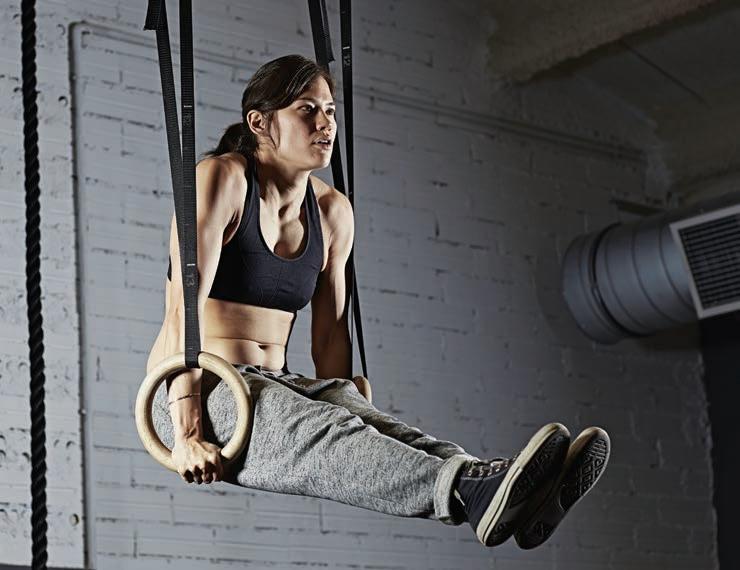
6 minute read
EAST MEETS WEST




fi tnessalfresco
There is nothing more invigorating or lifea rming than plummeting down a powdery slope.
biggest things we’re coaching is mental tactics—getting people to trust and believe in themselves so that they can do the things that the mountain asks of them,” she says.
One of the best ways to work on this is to try anything new during non-ski months. “Even if it’s a different class in the gym. Enjoy the fact that you will feel different and move differently than you have before,” Simpson says. “If there’s a moment where you get frustrated, do your best to embrace it because that’s where the learning happens.”
By facing my many fears and getting up after I fell (over and over again), I reached a proficiency level of which I am proud.
But the big bonus had less to with advances I made on my board than what it felt like to seize a new, exciting opportunity (and tackle an old, frozen prejudice). As Silverman says, “It’s a chance to be a kid again.” WHAT’S IN YOUR PACK?
Professional ski instructor Heidi Ettlinger’s top five tips for preparing for a day of dominating the slopes: ➜ Fuel Up First Thing: Eat as if you were preparing for a day hike or other outdoor activity. “Plenty of carbs and protein for sustainable energy,” she says. Think egg and bacon sandwich, oatmeal with berries or fruit, or whole grain pancakes with pure maple syrup. ➜ Layer on the Warmth: Try an inner layer of long underwear, a middle layer of fleece or a sweater, an outer layer combo of wind and water-resistant jacket and pants, and a single pair of socks that are ski specific— long enough to cushion your lower leg and foot and keep you warm and comfortable. ➜ Avoid the Mid-day SlopeSlump: Keep your energy up with easy-to-digest carbs and a bit of protein, too, like a hearty bowl of chili and a whole-grain bread roll. And don’t forget the snacks! “I always carry some kind of power bar in my pocket.” ➜ Heap on the HydroPower: When you’re not hydrating you are dehydrating, says Ettlinger. “Because of the dry winter air, along with indoor heating, you may find yourself needing to hydrate more often, especially to ward off feeling sluggish in the morning. ➜ Don’t Deprive Your Digits: “Personally I love my Hestra three-finger mittens for dexterity and warmth,” says Ettlinger, “and I always wear a neck warmer for protection from wind, blowing snow, and the sun.”
PHOTOGRAPHS BY GETTY IMAGES


X MARKS THE CENTERED SPOT
Looking to improve your ability to balance? CrossFit may well hit the body bullseye. By Angela Arsenault
GUTTER CREDIT

fitnesscrossfit
PHOTOGRAPHS BY GETTY IMAGES here’s a good chance that most of the hundreds of thousands of people streaming into CrossFit gyms worldwide are not necessarily thinking about improving their balance when they take on the workout of the day (WOD, in CrossFit parlance). But with its unique blend of metabolic conditioning, gymnastics, and weightlifting, CrossFit provides a stellar wholebody way to do just that.
CrossFit founder Greg Glassman has said that the sport was designed to address 10 general physical skills: cardiovascular endurance, stamina, strength, flexibility, power, speed, coordination, agility, accuracy, and balance. Of these, “balance is more neurological, so you have to train the body through repetition,” says the owner of Old City CrossFit in Washington, D.C., Erin Losie, adding that there are lots of different movements that help a CrossFitter improve her balance. Many are done during the warmup portion of the workout, such as handstand kick-ups. By kicking up into a handstand position against a wall, you can start to become more comfortable with being inverted, which takes “incredible core strength and balance,” says Losie.
As you move further into a CrossFit workout, you’re likely to encounter a weightlifting component. Whether it’s powerlifting (squat, bench press, and deadlift) or Olympic-style (snatch, clean, and jerk), here’s where CrossFit can provide a surprisingly powerful boon to your balance.
“Every lift requires a strong kinetic chain, and that is what helps you maintain balance,” says Tyler Barnes, owner of CrossFit TT in South Burlington, Vermont. He describes a strong kinetic chain as the ability to “use all of your muscle groups in tandem,” versus working one muscle group at a time.
With the Olympic lifts in particular, Barnes says, “you’re asking folks to start in a position of high stability, then, during the explosive phase of the movement, the athlete is in a relatively unstable position,” returning to a stable squat position to complete the lift. When done correctly, though, moving in and out of stable positions quickly and with added weight is a valuable training tool for everyday movements, like bending over or simple activities like a short hike. One of Losie’s CrossFit clients is deaf and losing his vision, a key factor in maintaining balance. He came to her gym looking to find a solution. “He loves hiking but he hadn’t been able to hike because he had really poor balance as a result of vision loss,” she says. After roughly six months of daily CrossFit workouts, Losie’s client had improved his balance so much that he was able to start hiking again. “He felt confident that he wasn’t going to fall and really hurt himself,” she said. That result would not be surprising to Barnes, who says that weightlifting is a type of “functional movement,” or one that teaches the human body to move the way it was designed to. “As we evolved, we didn’t have tools or assistance devices that enabled us to pick stuff up,” he says. “We had to learn how to use our bodies to do it effectively so that we wouldn’t get hurt.”
Not getting hurt is still a high priority for most humans. As I watch some CrossFit weightlifting videos, I think, That looks like it would harm, rather than help, my body. Chiropractor Lindsey Mathews, a CrossFit coach at Deuce Gym in Venice, California, says she thought the same thing before joining. But after completing her Level 1 training, as well as other CrossFit seminar courses, Mathews understood that finding a great coach and the right gym was key, as was taking the time to learn proper form.
Mathews says that the full-body nature of weightlifting “exposes parts of our bodies that we aren’t using or that we’ve neglected.” By mindfully improving your balance, you can accomplish the everyday goal of performing simple tasks with strength and ease, like hopping over a toy left on the floor or placing your luggage in an overhead bin. “We want our members to be able to play with the little kids in their lives until the kids get tired,” says Losie, “not the other way around.”
CAN I GET A DOCTOR’S NOTE?
As with most fitness modalities, check with your doctor before showing up at your local CrossFit affiliate. Dr. Stefan Montgomery, a family and sports medicine physician in Spartanburg, South Carolina, says that “CrossFit can lead to very high heart rates and high anaerobic components. Some people [over age 50] need a stress test before starting this rigorous of an exercise program.” And for weightlifting, in particular, Dr. Montgomery says to be especially mindful of your form during the latter part of the workout when muscles are fatigued.









